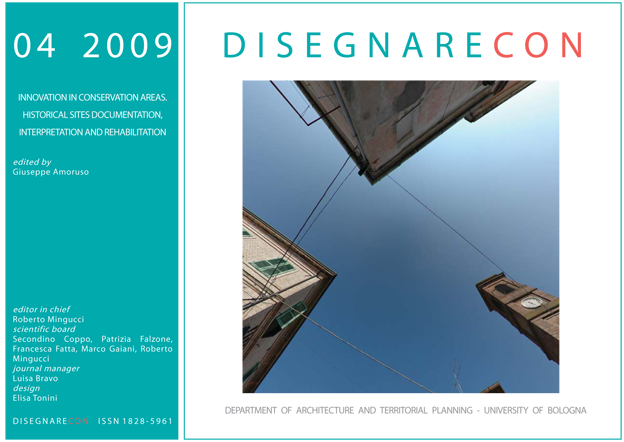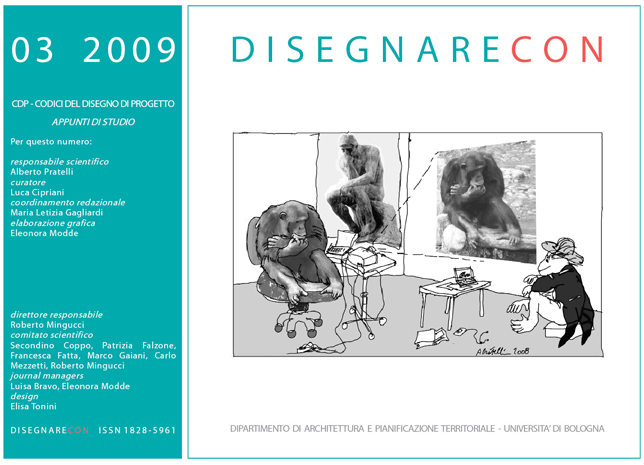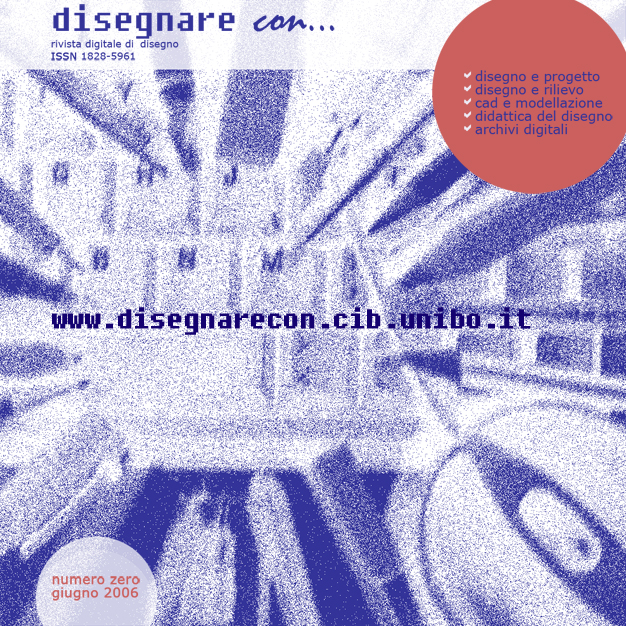Archives
-
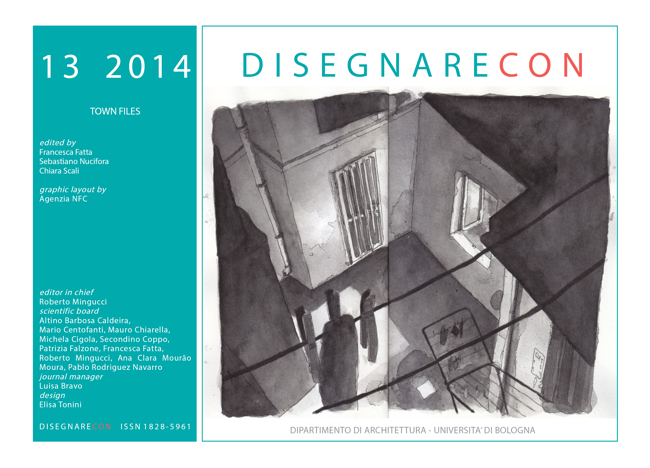 Vol. 7, n. 13 (2014) - Town files, edited by Francesca Fatta, Sebastiano Nucifora and Chiara Scali
Vol. 7, n. 13 (2014) - Town files, edited by Francesca Fatta, Sebastiano Nucifora and Chiara Scalibetween desire and need: the representation of urban landscape in the digital thinking era.
The act of representing city has acquired, over time, different meanings. the need of comprehension, expressed with precision of measurement and geometry, relative to practical and military issues, alternated with the desire to magnify, or imagine, the urban landscape in both of works of artists, realistic or utopian and prophetic ones, always affected by the use of methods and tools that the technique of representation has from time to time made available to them.
-
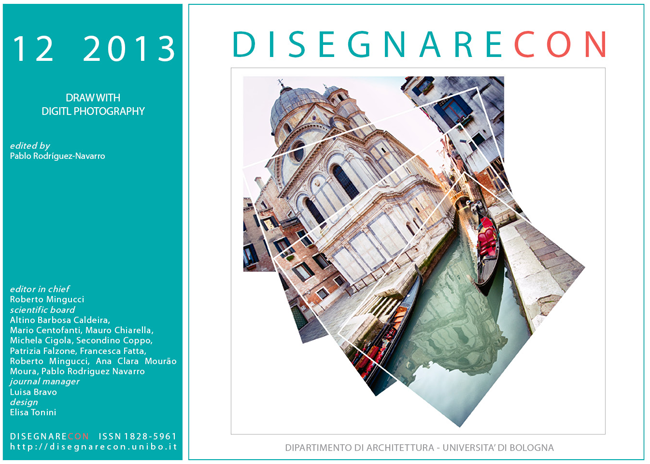 Vol. 6, n. 12 (2013) - Draw with digital photography, edited by Pablo Rodríguez-Navarro
Vol. 6, n. 12 (2013) - Draw with digital photography, edited by Pablo Rodríguez-NavarroPhotography changed forever the way that we see and understand the world, from remote landscapes to outstanding architectural features from different cultures. However, the inclusion of the photographic imagine in the graphic development of the project, both at the stage of architectural documentation and in the conceptual phase, had to wait until the last quarter century. Furthermore, the arrival of digital imaging brought a big change in the production and management of photographic information.
-
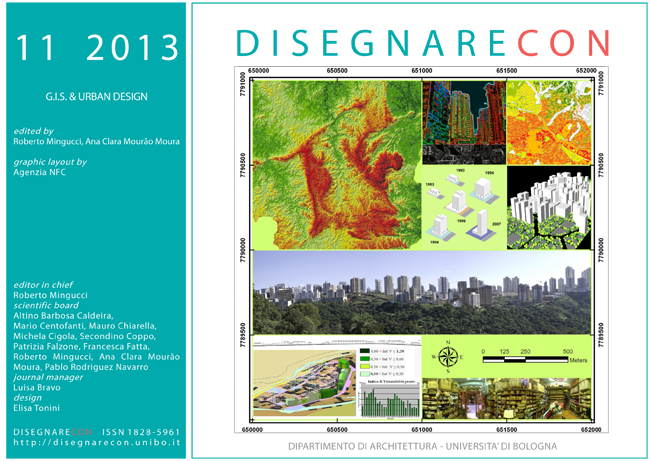 Vol. 6, n. 11 (2013) - GIS & Urban design, edited by Roberto Mingucci and Ana Clara Mourão Moura
Vol. 6, n. 11 (2013) - GIS & Urban design, edited by Roberto Mingucci and Ana Clara Mourão MouraThe articles that compose the issue #11/2013 of DISEGNARECON present different applications of geo-technologies, composed of techniques of territorial mapping, remote sensing, Geographic Information Systems, visualization and three-dimensional representation. The authors discuss the state-of-art and the state of the design in GIS & Urban Design, through conceptual reflections and case studies developed in Europe and South America. They represent a mosaic of the contemporary challenges in planning and management of urban territory, from regional scale to the scale of single units, presenting the new values in urban design. They describe how the GIS and its developments and applications have a relevant role in decision-making support, considering local laws and simulating the conformation of the new sustainable urban landscape.
The articles point out to the new trends in geo-technologies, with emphasis on their role to promote the comprehension and visualization on the urban territory and, consequently, favoring the participatory planning. Among the new trends there are the developments of methodologies of spatial analysis, through the construction of representative models of reality, which simulate decisions of policymakers and the design of the landscape in predictive form.
The issue #11/2013 of DISEGNARECON is carried out by complex diagnostic studies, by the simulations of projects for a wide display of propositions and of the actors involved, and by the digital modeling of territorial occupation, what makes the use of GIS technology a sine qua non condition. -
 Vol. 5, n. 10, Special Issue (2012) - DOCO 2012, edited by R. Mingucci, C. Bartolomei, L. Bravo, S. Garagnani
Vol. 5, n. 10, Special Issue (2012) - DOCO 2012, edited by R. Mingucci, C. Bartolomei, L. Bravo, S. GaragnaniThis journal issue collects the Proceedings of the International Conference on “Documentation and Preservation of the Architectural and Urban Heritage”, the third Conference in DoCo2000 series. It’s been undertaken as part of the PRIN 2008 project, entitled ”Integrated informative systems related to the protection, conservation and enhancement of the architectural and urban heritage”.
-
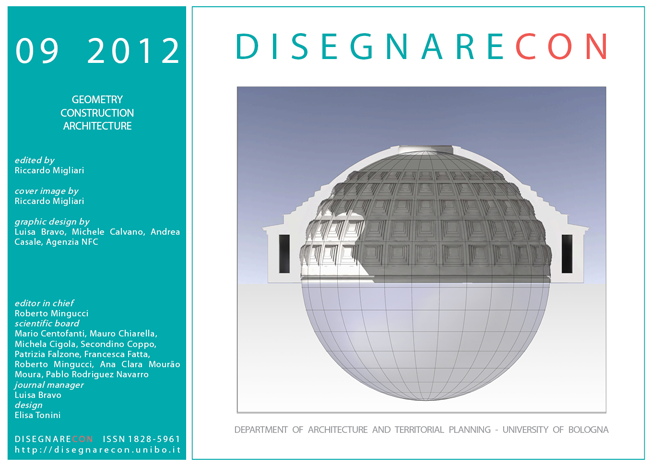 Vol. 5, n. 9 (2012) - Geometry - Construction - Architecture, edited by Riccardo Migliari
Vol. 5, n. 9 (2012) - Geometry - Construction - Architecture, edited by Riccardo MigliariThe verb “to construct” can be used, with equivalent meaning, in two apparently distant contexts, the theoretical and abstract context of the Geometry and the practical and physical context of the Architecture.
The profound relation of the verb to the two contexts remains as such, both if the meaning of Geometry specialises into its different acceptations (Euclidean, solid, descriptive, differential …), and also when the scale of the Architecture is understood to be extended to the landscape, the town planning, the building industry and the design.Thus, in the word “construction”, is concealed, more than in any other, the answer to the question set by the advent of the digital representation and namely whether the study of geometry is still among the foundations of the formation of an architect, an engineer and a designer. If it is so, the word “construction” can perhaps answer a second question, which derives from the first: which geometry?Issue 9/2012 of DISEGNARECON will be hosting the possible answers to the two questions we set. The problem will be dealt with both from the theoretical and from the practical point of view, providing examples; both from the point of view of the research, and from the didactic point of view; in order to outline the current evolution of the geometric disciplines within architectural, engineering and design studies.
-
 Vol. 4, n. 8 (2011) - Cultural Heritage communication technology, edited by E. Ippoliti, A. Meschini
Vol. 4, n. 8 (2011) - Cultural Heritage communication technology, edited by E. Ippoliti, A. MeschiniThis magazine issue is about the relationship between digital techniques and the communication of cultural heritage and specifically aims at portraying how the interest and implications of these two things are widespread. Without trying to go too in depth, various points of view have been compared, each taken from different articles presenting a wide range of possible approaches on the subject of creating a wealth of information on cultural heritage and how it can be made available to the public without difficulty.
Therefore, this issue wants to create a forum for a many-sided comparison built on a wealth of experience and opinions of different authors. In this way the abundance and versatility of the contributing professions (architects, archaeologists, engineers, mathematicians, graphic designers, artists, video producers, digital experts, 3D graphic designers, critics, directors, etc.) has given life to a precious blend of know-how, which is without doubt enhanced by present-day digital technology.
-
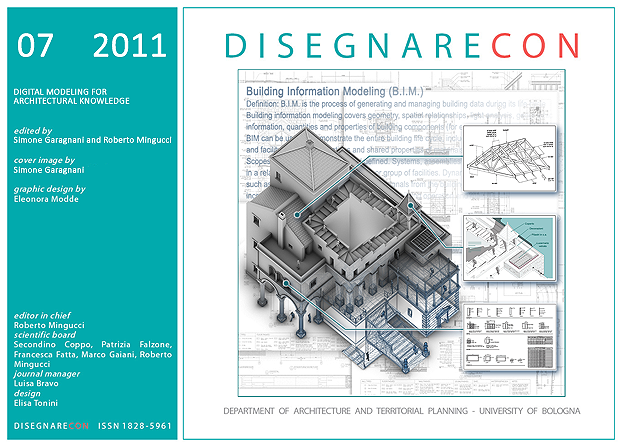 Vol. 4, n. 7 (2011) - Digital modeling for architectural knowledge, edited by S. Garagnani and R. Mingucci
Vol. 4, n. 7 (2011) - Digital modeling for architectural knowledge, edited by S. Garagnani and R. MingucciDISEGNARECON issue #7/2011 is focused on digital parametric tools in architecture and their role for practitioners and professional firms. Building Information Modeling and digital representation will contribute more and more to the spread of high-profile components, generating a great flexibility and variety in building techniques. But how effective is parametric design and how can it be useful to modern designers? Managing knowledge is also important, not only in Building Information Modeling: DISEGNARECON issue #7/2011 includes some works about digital archiving related to architecture and information database in general will be presented.
-
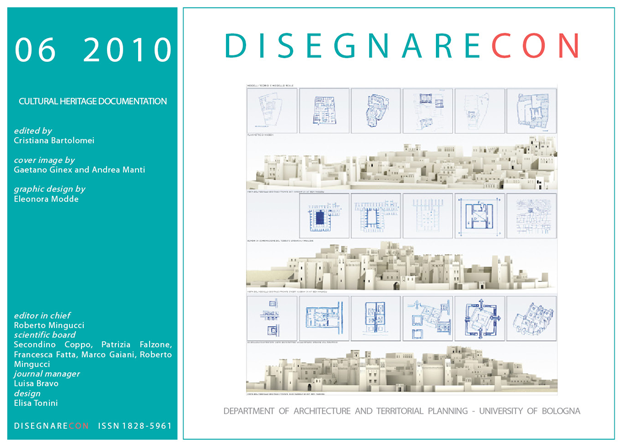 Vol. 3, n. 6 (2010) - Cultural heritage documentation, edited by Cristiana BartolomeiThis issue addresses a selection of topics in the wide spectrum of cultural heritage documentation as a point of safeguard, conservation and civilation of contemporary culture. Documentation processes are strongly important in the protection of cultural heritage and identity of territories. Conservation and preservation of the tangible and intangible cultural heritage is promoted by the contemporary agenda in times of conflict and natural disasters and in some cases regards also the impact of tourism on cultural heritage sites. Papers will be expected to document innovative practices for integrating contemporary architecture in a sustainable way into an existing context as well as the transformation of urban communities by the promotion of historic urban environments. Another focus recently debated regards processes and strategies for survey, documentation and design of historical sites and strategies to enhance local identity, creating a positive and sustanaible growth and a renewal of lands and cultural, social and economic values. The essays are divided in two chapters: one is about methodologies and the other one is about tools and ways of communication.
Vol. 3, n. 6 (2010) - Cultural heritage documentation, edited by Cristiana BartolomeiThis issue addresses a selection of topics in the wide spectrum of cultural heritage documentation as a point of safeguard, conservation and civilation of contemporary culture. Documentation processes are strongly important in the protection of cultural heritage and identity of territories. Conservation and preservation of the tangible and intangible cultural heritage is promoted by the contemporary agenda in times of conflict and natural disasters and in some cases regards also the impact of tourism on cultural heritage sites. Papers will be expected to document innovative practices for integrating contemporary architecture in a sustainable way into an existing context as well as the transformation of urban communities by the promotion of historic urban environments. Another focus recently debated regards processes and strategies for survey, documentation and design of historical sites and strategies to enhance local identity, creating a positive and sustanaible growth and a renewal of lands and cultural, social and economic values. The essays are divided in two chapters: one is about methodologies and the other one is about tools and ways of communication. -
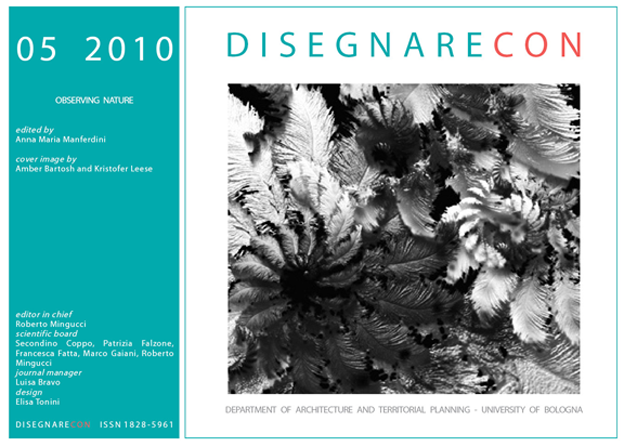 Vol. 3, n. 5 (2010) - Observing Nature, edited by Anna Maria Manferdini
Vol. 3, n. 5 (2010) - Observing Nature, edited by Anna Maria ManferdiniFor centuries Nature has represented an inspiration in fields and disciplines, ranging from those related to scientific research up to the artistic ones. As a consequence, this connection has supported a long debate upon the relationship between Art and Science. In recent decades, thanks to the availability of new sophisticated tools and methods of investigation, the interests towards Nature and its observation has been renewed and has suggested applications in different fields. The study of Nature, of its forms, functions and principles that rule the evolution and the balance between living creatures and the external environment suggests experimentations in fields such as, for example, Architecture and Design of anthropised environment, which are actually called to provide answers to the problem of the relationship between man and the natural environment.
